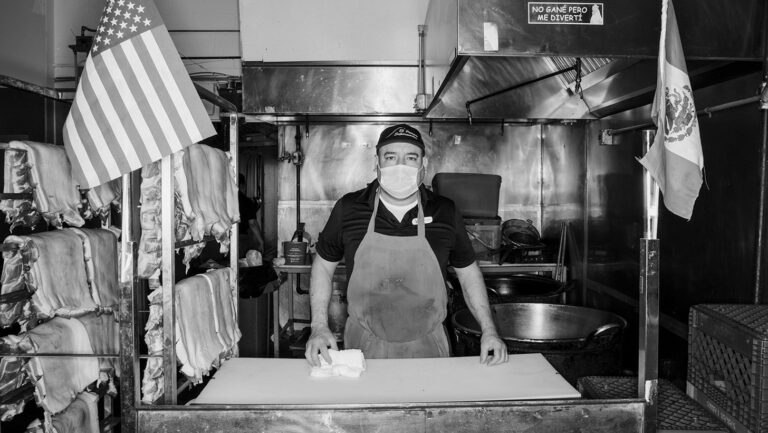These days, polite people feel guilty about the natural human tendency to stare at other people with physical deformities or quirks. Jump back a hundred years, though, and it’s an entirely different story. Back then, gawking at so-called “freaks” wasn’t just socially acceptable, it was good, wholesome family entertainment. Well, maybe not wholesome per se, but folks certainly didn’t feel bad about it, paying good money for the chance to see human oddities up close and in the flesh. Fire eaters! Sword swallowers! Human blockheads! Two-headed babies! Armless ladies! Pinheads! Midgets! Sixteen-toed men! Hard stuff to resist.A new historical exhibit at the Albuquerque Museum takes a look at this lost form of American entertainment, emphasizing the colorful circus sideshow banners that once advertised the acts. Personal favorites include “Dirty Dora: She Eats Mud!” and “Laurello: The Man with the Revolving Head!” but there are plenty of other fun ones to enjoy.As Deborah Slaney, the museum’s curator of history, pointed out to me, these banners are the real deal. Given to the museum following a similar 1988 exhibit, reviews at the time noted that the banners still gave off the musty stench of elephants. Actually, you can still smell that distinctive scent now. (Apparently, elephants not only never forget, they also never stop stinking.)After the railroad arrived in Albuquerque in 1880, our city became a prime spot for traveling shows, featuring everything from balloon ascensions to a horse that could dive 70 feet into a tub of water. As an added bonus, the exhibit includes a handful of photographs of turn-of-the-century Albuquerque carnivals and circuses. It would’ve been nice to see a few more of these, but maybe this is all they could find in the museum’s extensive photo archive.An hour-long History Channel documentary called “History’s Mysteries: Circus Freaks and Sideshows” plays on a small monitor in one corner of the gallery. It’s worth sitting through the whole program, which does a commendable job of providing context for a form of amusement most of us know next to nothing about.Back in the mid 1800s, as the industrial revolution gave the hard-working masses some added leisure time, all sorts of tasteless, low-rent entertainment began making the rounds in the United States. From big-tent religious revivals to medicine and minstrel shows, these spectacles pulled folks in by the thousands.At the approach of the 20 th century, sideshows staged outside circuses, amusement parks and carnivals took on a weirder tone, regularly including performers whose oddball abilities or disabilities transformed them into celebrities. Called Ten in Ones, these shows featured 10 (or so) acts performed all day long in constant rotation. A talker outside the tent would sell the show, often exhibiting an act or two to entice a skeptical crowd. When he finished his pitch, shills in the audience would rush forward to buy tickets, inspiring everyone else to follow suit.The sideshow reached its peak between the two World Wars, culminating in the cult classic 1932 film Freaks. A huge flop at the time, the movie featured some of the biggest sideshow acts in the country. Mainstream American culture was revolted at the spectacle of it all, ushering in the slow but steady delegitimization of sideshows, which waned for decades, finally disappearing almost entirely by the ’60s.The boilerplate PC argument, of course, is that these individuals were gruesomely exploited. Yet the documentary makes a compelling case that the performers themselves rarely thought this was so. For many of them, the alternative would have been to hide at home, wallowing in poverty. By embracing the qualities that made them different, they brought home fat paychecks and often became quite famous in the process.The exhibit includes several sideshow artifacts: an amusement ride airplane, a circus wagon panel, a carousel horse, a set of juggling pins. As far as the banners go, a painter interviewed in the documentary says the focus was typically on sex and violence, and what’s more American than that? Call me old-fashioned, but I’d pay a nickel, and then some, to walk into that tent.
Human Volcano and Other Amazing Wonders , an exhibit of circus sideshow banners, runs through April 20, 2008, at the Albuquerque Museum. 243-7255, www.cabq.gov/museum.










